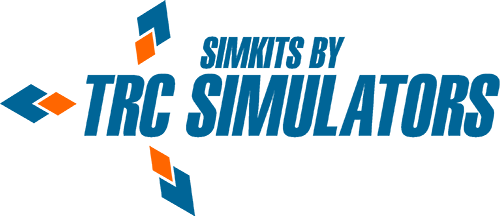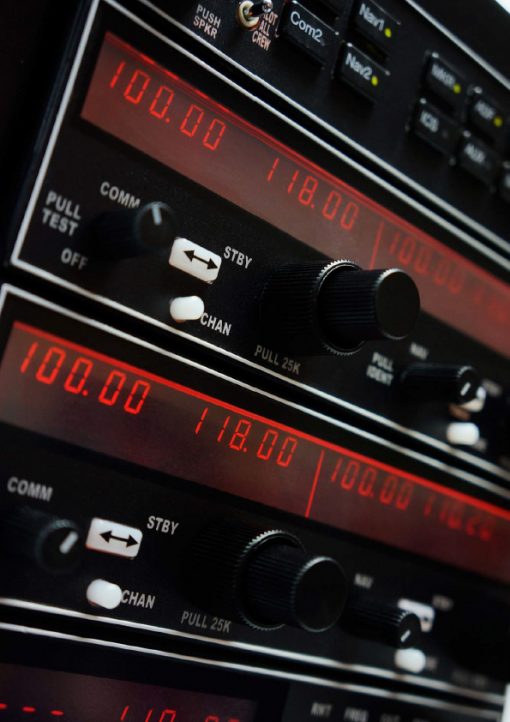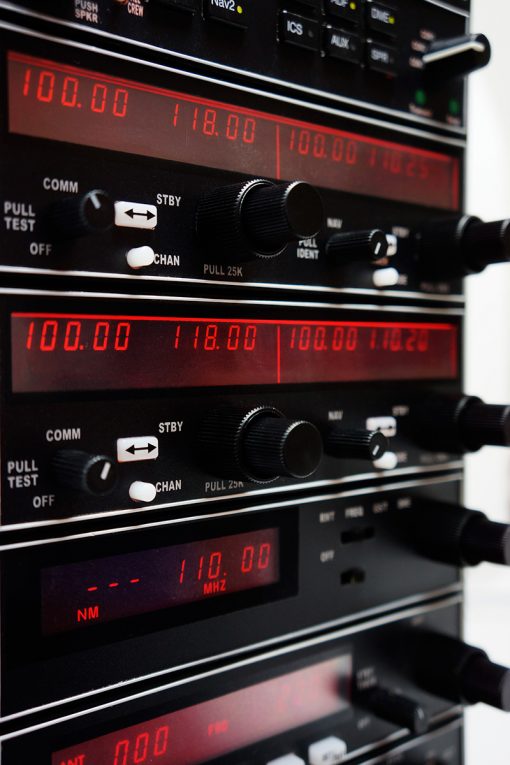|
SIMKITS https://www.simkits.com/product/radio-stack-tower/ Export date: Thu Apr 3 9:50:59 2025 / +0000 GMT   |
Radio Stack Tower
Price: €3,900.00 ex. VAT/Sales Tax SKU: 102508 Product Categories: Radio Stack Units Product Tags: KAP140 autopilot, KMA28 Audio Panel, KN62A DME, KR87 ADF, KT76CT Transponder, KX155A NAV/COM1, KX155A NAV/COM2, radio stack, radio stack tower Product Page: https://www.simkits.com/product/radio-stack-tower/
Product Summary(New version coming soon) The RS372 Radio Stack Tower is a complete stand-alone set of avionics. Product DescriptionTRC's Radio Stack RS372 for Flight Simulation is so realistic that you can hardly tell the difference between the simulated Radio Stack and the real Bendix King Silver Line* products. Modelled after the most popular Radio Stack, as used in the Cessna 172 Skyhawk*, all details are precisely reproduced extremely close to the exact dimensions of the original radios. The stack is constructed as a modular system. Each radio is a separate module and connected via a ribbon cable to the built in Radio Stack Controller, a microprocessor board which connects to your PC via USB running Flight Simulator Software. You can therefore change the order of how the radios fit in your panel. The cabinet includes the RSC Controller board and the Power Supply. The cabinet is also equipped with 6 rotary knobs to adjust the settings of the Altimeter Pressure, Heading, Autopilot Heading Bug, VOR1, VOR2 and ADF settings. This function is usefull when a flight simulator setting is used where the flight panel is displayed on the screen. This function can be disabled when the radio stack is used in combination with the simulated hardware gauges. The Following units are included in the Radio Stack Tower KMA28 Audio PanelThe functionality of the simulated KMA28 Audio Amplifier/Intercom/Marker Beacon Receiver is extremely close to the original product. Users can identify which receivers are selected by noting which of the green switch LEDs are illuminated. Push buttons labeled Nav 1, Nav 2, DME, MKR (Marker), ADF, AUX (auxiliary), and SPR (Speaker) are “latched” type switches (the latching function is indicated by a led). KX155A/165A NAV/COMThe RSC372 Radio Stack is equipped with two KX155A/165A radios. The unit has a so-called CDI (Course Deviation Indicator). The vertical “needle” moves side to side similar to a mechanical CDI. When the needle is centered, the aircraft is on the selected OBS course. When the active frequency is tuned to a VOR frequency, the center of the CDI scale displays the “TO” or “FROM” indicator. KN62A DMEThe unit is channeled internally with its own two concentric frequency selection knobs. The smaller of the two knobs has an “in” and an “out” position. When in the “in” position, this small-er knob changes the 0.1 MHz digit (0.0, 0.1, 0.2, etc.). When pulled “out”, it adds 0.05 MHz to the frequency and tunes in 0.1 MHz steps (0.05, 0.15, 0.25, etc.). The outer, larger knob changes the larger digits (1 MHz, 10 MHz). KT76CT TransponderLike other Mode A/Mode C transponders, the KT 76C replies with any one of 4,096 codes, which differ in the position and number of pulses transmitted. By “replying” to ground transmissions, your KT 76C enables ATC computers to display aircraft identification, altitude and ground speed on Enroute, Approach or Departure Control radar screens. When the IDENT button is pressed, your aircraft will be positively identified to the Air Traffic Controller. The KT76C also displays Flight Level Altitude, marked by the letters “FL” and a number in hundreds of feet, on the left side of the display. KR87 ADFThe active frequency (to which the ADF is tuned) is displayed in the left side of the window at all times. A standby frequency is displayed in the right side when “FRQ” is annunciated. The standby frequency is placedin “blind” memory when either FLT (Flight Time) or ET (Elapsed Time) mode is selected. With “FRQ”on, the standby frequency is selected using the frequency select knobs which may be rotated either clockwise or counterclockwise. Pull the small inner knob out to tune 1's. Push the smaller inner knob in to tune 10's. The outer knob tunes the 100's and the 1000's up to 1799. KAP140 AutopilotThe TRC autopilot simulator is based on the KAP 140 Autopilot System from Honeywell, which is a rate based digital autopilot system offering smoothperformance and enhanced features found only in more expensive autopilots. This system brought digital technology and reliability into the light aircraft cockpit. Internal monitors keep constant track of the KAP 140's status and provide for automatic shutdown of the autopilot or trim system in the event of a malfunction. Product Attributes
Product Gallery  
|
|
Product added date: 2016-10-05 15:01:50 Product modified date: 2024-01-09 10:26:02 |
|
Export date: Thu Apr 3 9:50:59 2025 / +0000 GMT Product data have been exported from SIMKITS [ https://www.simkits.com ] Product Print by WooCommerce PDF & Print plugin. |






